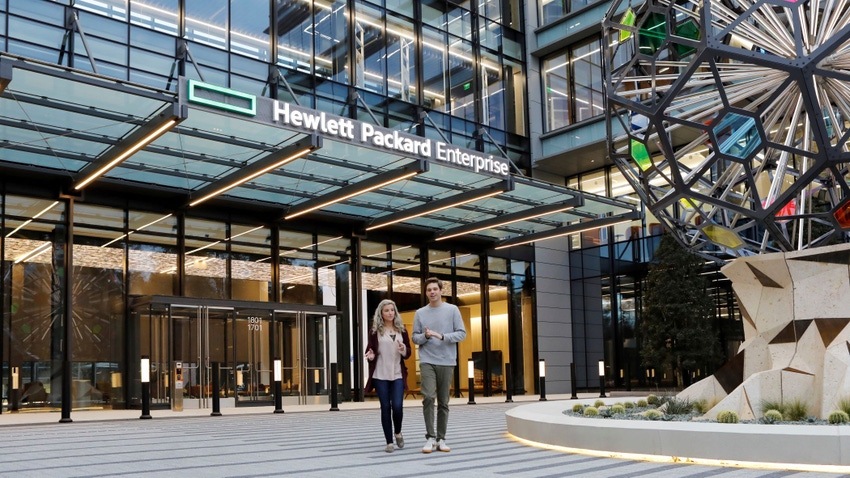Reports: HPE to bulk up with $13B takeover of Juniper
Juniper's share price soared in after-hours New York trading following reports HPE is preparing a bid.

Big mergers between network vendors seemed in 2016 to have run their course after Nokia bought Alcatel-Lucent in a €15.6 billion (US$17.1 billion) deal. For a while, there was speculation that Cisco and Ericsson might formalize a loose tie-up, but the arrangement ultimately went nowhere. These days, the industry's attention is usually on nurturing competition rather than driving consolidation. But this week it has shifted to reports that HPE is set to buy Juniper Networks.
Originating with the Wall Street Journal, the report suggests a deal could be announced this week and say HPE will spend close to $13 billion on a takeover of Juniper, citing sources close to the matter. Shares in Juniper, with a market capitalization of about $9.6 billion, surged 22.3% in after-hours trading on the New York Stock Exchange. HPE, worth about $23 billion, watched its own stock fall 7.5%. Neither company has been officially willing to comment.
Created when the former Hewlett Packard split into two separate companies in 2015, HPE today sells an array of IT and networking products to the enterprise sector. But its compute and storage units, which together account for about half its sales, are shrinking. For the three months to the end of October 2023 (HPE's fourth quarter), when HPE made $7.4 billion in overall sales, storage revenues fell 12%, compared with the year-earlier period, while those from compute products were down 30%. Instead, HPE has been looking to its newer "Intelligent Edge" and artificial intelligence assets for growth.
The former is built largely on a $3 billion takeover in 2015 of Aruba, a wireless networking specialist with annual sales of about $730 million at the time. Fortified by that move, HPE is today one of the big hitters in enterprise Wi-Fi and related services, generating $1.4 billion in fourth-quarter Intelligent Edge sales, a 41% year-over-year increase. Last June, it added to its wares with the acquisition of the much smaller Athonet, an Italian developer of private 5G networks.
'Fantastic technology'
As its full company name indicates, the networks market has long been where Juniper makes its money, and specifically the switches and routers that represent the Internet's plumbing. Its various networking assets, expertise in the connectivity world and roster of enterprise customers would hold obvious interest for HPE as it tries to expand in this area.
Writing on X (formerly Twitter), Gabriel Brown, a principal analyst with Heavy Reading (a Light Reading sister company), said "Juniper seems to have run a relatively tight ship in recent years. It has fantastic technology products and customers, so you can see why HPE wants it."
Juniper, among other things, looks more ensconced with service providers than HPE and could help its new parent – if a deal goes ahead – with outreach in that market. The takeover of Aruba and push into enterprise Wi-Fi has already put HPE in fierce competition with Cisco, long Juniper's number-one rival. Post-acquisition, HPE would be a more formidable challenger.
Rather like HPE, though, Juniper has been struggling in some of its bigger markets. The product segment it today calls "automated WAN [wide area networking] solutions," Juniper's biggest, registered an 18% dip in third-quarter (July-to-September) sales, to $436 million. Its "cloud-ready data center" unit also witnessed a decline, with revenues down around 26%, to $170 million. In a tough economic environment, the performance helps explain why Juniper's share price has dropped 5% in the last year.
What Juniper does share with HPE is a growing AI business, thanks partly to a succession of takeovers. Revenues at its "AI-driven enterprise" unit soared 43% for the third quarter, to $382.5 million. HPE, similarly, reported a 37% increase in fourth-quarter sales at its "high-performance computing and artificial intelligence" business, to $1.2 billion. It seems likely to have particular interest in Mist AI, a Juniper system that uses analytics and machine learning to resolve network problems and improve the customer experience.
Overlap in the Wi-Fi and switching areas, noted on X by Heavy Reading's Brown, offers scope for cost savings through "synergies" and staff cuts as HPE works to boost profits. For its last fiscal year, it reported a 7% increase in net earnings, to more than $2 billion, but this was largely because an impairment charge hurt results the year before. Headcount rose from 60,200 in October 2022 to about 62,000 a year later.
Yet to report full-year results for 2023, Juniper reported a 36% drop in net income for the first nine months of the year, to about $186 million. This was, however, mainly down to non-recurring items, with operating income up 9%, to roughly $344 million. In October, it warned of plans to cut about 440 staff, 4% of the 10,900 total Juniper employed in December 2022. The history of mergers and acquisitions suggests a combined HPE and Juniper will end up with considerably fewer than 72,460 employees.
HPE appears to have been circling Juniper for some time. Indeed, there were rumors it was plotting a move for the maker of Internet switches as far back as 2016, the year Nokia completed its takeover of Alcatel-Lucent. Nearly eight years later, the market clearly expects something to happen.
About the Author(s)
You May Also Like












